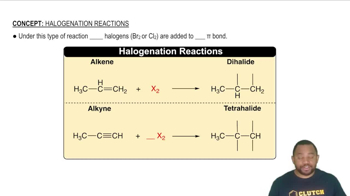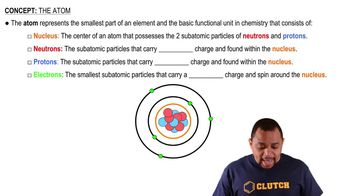Ch.22 - The Main Group Elements
Chapter 22, Problem 144
Little is known about the chemistry of astatine (At) from direct observation, but reasonable predictions can be made.
(a) Is astatine likely to be a gas, a liquid, or a solid?
 Verified step by step guidance
Verified step by step guidance1
Consider the position of astatine (At) in the periodic table. It is located in Group 17, which is the halogen group.
Recall the states of matter for other halogens at room temperature: fluorine (F) and chlorine (Cl) are gases, bromine (Br) is a liquid, and iodine (I) is a solid.
Understand the trend in the states of matter for halogens as you move down the group: the elements become more solid-like.
Since astatine is below iodine in the periodic table, predict that astatine is likely to be a solid at room temperature.
Conclude that based on periodic trends and the properties of halogens, astatine is most likely a solid.

Verified video answer for a similar problem:
This video solution was recommended by our tutors as helpful for the problem above.
Was this helpful?
Key Concepts
Here are the essential concepts you must grasp in order to answer the question correctly.
Periodic Trends
Periodic trends refer to the predictable patterns in the properties of elements as you move across or down the periodic table. For instance, elements in the same group often exhibit similar physical and chemical properties. Understanding these trends helps predict the state of an element at room temperature based on its position in the periodic table.
Recommended video:
Guided course

Periodic Trends
Halogens
Astatine (At) is a member of the halogen group, which includes fluorine, chlorine, bromine, and iodine. Halogens typically have varying states at room temperature, with fluorine and chlorine being gases, bromine a liquid, and iodine a solid. This group’s properties can provide insights into the expected state of astatine, which is likely to be a solid due to its heavier atomic mass.
Recommended video:
Guided course

Halogenation Reactions
Atomic Structure and Bonding
The atomic structure of an element, including its atomic mass and electron configuration, influences its physical state. Heavier elements tend to have stronger van der Waals forces due to increased electron cloud size, which can lead to solid states at room temperature. Astatine's atomic structure suggests it will exhibit solid characteristics, similar to other heavier halogens.
Recommended video:
Guided course

Atom Structure
Related Practice
